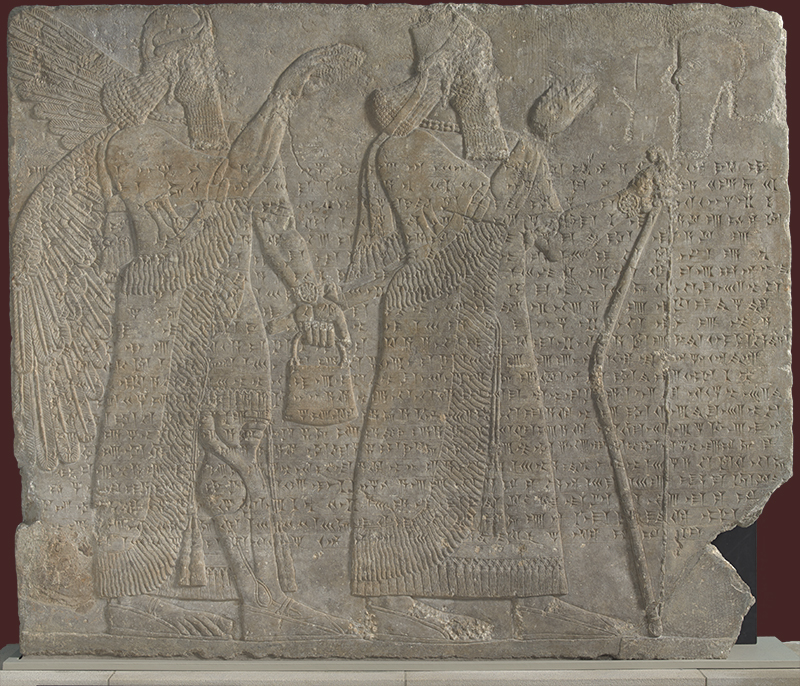April Object of the Month: “Winged Spirit of Apkallu Anointing Ashurnasirpal II from Kalhu (Nimrud)”
By Bowdoin College Museum of Art
“Assyrian Relief: Winged Spirit or Apkallu Anointing Ashurnasirpal II from Kalhu (Nimrud), Iraq,” ca. 875–860 BCE. Gift of Dr. Henri Byron Haskell, Medical School Class of 1855. Bowdoin College Museum of Art.
This Assyrian relief depicting a protective apkallu mythological figure anointing King Ashurnasirpal II was excavated at the site of modern-day Nimrud, ancient Kalhu. Dr. Henri Bryon Haskell, Medical School Class of 1855, acquired this panel during his missionary tour in Mesopotamia, along with four others, and had them shipped to Bowdoin College in 1860 for a total cost of $728.17. Ornamenting his impressive Northwest Palace, completed in 879 BCE, these highly detailed reliefs reflect the abundant wealth of King Ashurnasirpal II both in their iconography and artistic skill.
The supreme rulership of King Ashurnasirpal II is signified through his fez-like royal crown, exaggerated musculature, and rich bodily adornments, including gold arm cuffs and rosette bracelets. The Standard Inscription in cuneiform that fills the middle of the panel further reinforces Ashurnasirpal II’s power. This writing was repeated across all the slabs lining the palace walls, and recounts the King’s many military and political successes, among them the founding of Kalhu and the execution of its extensive building projects.
The extent to which these reliefs encapsulated and preserved the god-like strength of King Ashurnasirpal II is illustrated by the fact that the invading coalition of Babylonians and Medes defaced these works during their sack of Kalhu in 612 BCE. The image of the King, on reliefs such as this one, was so potent that these pillaging groups destroyed them in order to demonstrate political dominance. This ancient “vandalism” is apparent in the deliberate damaging of the King’s right hand, eyes, nose, ears, beard, Achilles tendon, and bow.
Additionally, there is a ghostly silhouette in the upper righthand corner of the panel that appears to have been roughly and hastily executed, likely by the Babylonians and Medes. Adhering to a similar scale as the King’s head, this figure creates a sense of tension and introduces a confrontation between the illustrious ruler of the past and the adversaries of the present. The fact that the Babylonians and Medes desecrated these images in their sacking of the city illustrates the notion that art can eternalize the power of a political figure and his kingdom.
This panel, along with the other four purchased by Haskell, is currently on display in the Assyrian Gallery as part of the exhibition Assyria to America, open until December 13, 2020
Brooke Wrubel '21, Student Curatorial Assistant
Bowdoin College Museum of Art